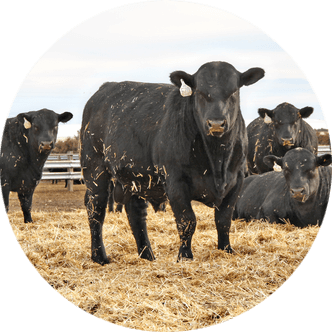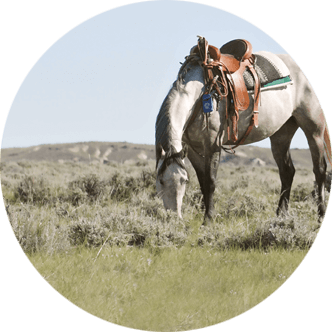Local processors share perspective during Farm to School panel
At the first annual Wyoming Farm to School (WFS) Conference, held Oct. 27-28 in Casper, Wyoming-based Processors Billy Brenton of Frank’s Butcher Shop and Mac Sussex of Bear Mountain Beef shared their perspectives on processing beef for school districts during a panel discussion.
Questions were facilitated by WFS Coordinator Bobby Lane and WFS Program Supervisor Carla Bankes, and audience participation was encouraged.
During the discussion, Brenton and Sussex talked about their respective journeys of getting local meat onto school menus, as well as some of the challenges they face and potential solutions to these issues.
Panelist background
To begin, Brenton and Sussex shared background on their respective operations, including how they got involved with meat processing and the services they currently offer.
Both Frank’s Butcher Shop and Bear Mountain Beef are U.S. Department of Agriculture (USDA)-inspected facilities, meaning they uphold some of the highest standards in the processing industry.
Frank’s Butcher Shop has locations in Hudson and Casper. The processing plant is located in Hudson, while the Casper location is a restaurant and retail site.
Frank’s Butcher Shop specializes in beef and pork products, and beef cattle are primarily raised by the Brentons on their ranch, as well as sourced from contracts with neighboring ranches and feedlots.
Bear Mountain Beef is located near Torrington and offers custom processing options for beef, pork, goats and lamb.
Sussex has been ranching in Goshen County all his life, but most of the shop’s business comes from processing outside animals for area producers. Currently, Bear Mountain Beef does custom labeling for roughly 100 different ranchers in the area.
Serving school districts
Both Frank’s Butcher Shop and Bear Mountain Beef provide processing services to several school districts, helping to get locally-raised beef on the menu.
Frank’s Butcher Shop works with 13 different school districts throughout the state and has processed over 13,000 pounds of beef for schools so far in 2025, according to Brenton. He explained the shop offers delivery services and provides wholesale prices to schools, which remain competitive with big-box retailers like Sam’s Club and Sysco.
Even in cases where big-box options may be slightly cheaper, Brenton maintains the price difference is worth it to keep Wyoming dollars in Wyoming, as well as to ensure high-quality, locally-sourced protein options go towards feeding kids.
Bear Mountain Beef provides processing for two to three Wyoming school districts, as well as several locations in Nebraska. Sussex supported Brenton’s comments, saying an additional benefit to locally-sourced meat is the assurance of quality and safety.
“We have a lot more time in our smaller establishments to do a zero-tolerance inspection than they do at big facilities where they have a bunch of animals running past at the same time and maybe only five seconds to look at each one,” Sussex said.
Overcoming obstacles
The panel also weighed in on some of the challenges involved with getting local beef into school districts and ways to combat these issues.
Overall, two of the most pressing challenges are supply and demand and lack of storage.
First, Brenton emphasized beef production does not start the day of slaughter, but rather years before as the animal must be raised, fattened and kept healthy long before it is able to become a food source.
Sussex added, because a school district’s primary need is hamburger, an issue arises when figuring out what to do with the excess, higher-quality cuts of meat like filets and ribeyes.
“School districts predominantly use ground beef, so all of the higher-end cuts are essentially going into ground beef and the cost you’re paying for the animal versus what you’re getting in ground beef sometimes doesn’t pencil out,” Sussex said.
As a solution, Sussex noted some school districts include these cuts in fundraisers for prom or other events, but the downside to this solution is a smaller overall yield of hamburger.
Next, the lack of central warehousing in Wyoming creates issues. Since processed meat takes up large amounts of space, it becomes difficult to store products for as long as necessary – especially throughout the various seasons.
For example, fair time is a peak window for slaughtering donated animals which often go to school districts, but since school is not yet in session, the issue of storage arises.
“Cooler space is a premium,” Brenton said. “If somebody buys an animal in the summertime and we slaughter them, then school doesn’t start for another two to three months, where are we going to put the product?”
Bankes highlighted the success of the local beef freezer utilized by Converse County School District #1 in Douglas, noting similar practices could be a potential avenue for combatting this problem while acknowledging the grant process used to secure funds for these projects is lengthy and varied.
Finally, current record-high cattle prices have affected the amount of donations received for school districts, as many producers are opting to sell cull cows when possible, rather than sending them to slaughter.
Sussex emphasized, although donations account for a large part of school district processing, there are grants and funding options available for school districts to apply for and use toward purchasing local meat which can help reduce reliance upon donations.
Grace Skavdahl is the editor of the Wyoming Livestock Roundup. Send comments on this article to roundup@wylr.net.





